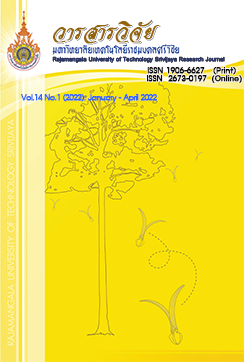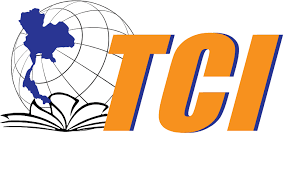Effect of Fermented Bio-Extract from Fish Residues by Lactobacillus casei on Growth and Yield of Brassica campestris var. chinensis
Keywords:
Bioextract, fish residues, Brassica campestris var. chinensisAbstract
The aim of this research was to study the efficiency of fermented bio-extract from fish residues by Lactobacillus casei on growth and yield of Brassica campestris var. chinensis. The concentration of fermented bio-extract was 1 : 500 (bio-extract : water, v/v) applied frequency three times per week. Experimental design used Randomized Complete Block Design; RCBD including 6 experiments, with three repetitions per experiment. Experiment comprises of treatments as fermented bio-extract include (1) formula 1 (fish residue 3 kg + molasses 250 ml +water 10 l + Microbial Activator Super LDD 2 25 mL), (2) formula 2 (fish residue 3 kg + molasses 250 ml +water 10 l + Lactobacillus casei 25 mL), (3) formula 3 (fish residue 3 kg + molasses 125 ml +water 10 l + Microbial Activator Super LDD 2 25 mL), (4) formula 4 (fish residue 3 kg + molasses 125 ml +water 10 l + Lactobacillus casei 25 mL) (5) chemical fertilizer formula 46-0-0 and (6) control The results found that using fermented bio-extract formula 2 gave the highest number of leaves, leave length and fresh weight (12 leaves/plant, 37.34 cm and 111.43 g respectively). The means of variance (ANOVA) analysis showed that the growth of Brassica campestris var. chinensis was significantly affected by all of 4 fermented bio-extracts at a 95% confidence level (p<0.05). The chemical analysis including pH, electrical conductivity (EC), Nitrogen, Phosphorus and Potassium obtained from all formulas of fermented bio-extract of fish residues by Lactobacillus casei were pass standards and suitable for use with Brassica campestris var. chinensis to reduce using chemicals and production costs.
References
Aroonrungsikul, C., Rattanakreetakul, C. and Korpraditskul, R. 2007. Water quality Bio-fermentation and composition, pp. 481-488. In The academic conference of Kasetsart University The 42nd (Division of Agricultural Extension and Communication Arts Branch). Kasetsart University, Bangkok. (in Thai)
Bray, R.H. and Kurtz, L.T. 1945. Determination of total, organic and available forms of phosphorus in soils. Soil Science 59: 39-45.
Dauda, S.N., Ajayi, F.A. and Ndor, E. 2008. Growth and yield of water melon (Citrullus lanatus) as affected by poultry manure application. Journal of agriculture and social science 4: 121-124.
Department of Agriculture. 2014. Biological extract. Available Source: http://www.organicthailand.com/article-th-5430, April 15, 2020. (in Thai)
Ghaly, A.E., Ramakrishnan, V.V., Brooks, M.S., Budge, S.M and Dave, D. 2013. Fish processing wastes as a potential source of proteins, amino acids and oils: a critical review. Journal of Microbial & Biochemical Technology 5(4): 107-129.
Harbaum, B., Hubbermann, E.M., Wolff, C., Herges, R., Zhu, Z. and Schwarz, K. 2007. Identification of Flavonoids and Hydroxycinnamic Acids in Pak Choi Varieties (Brassica campestris L. ssp. chinensis var. communis) by HPLC-ESI-MSn and NMR and Their Quantification by HPLC–DAD. Journal of Agricultural and Food Chemistry 55: 8251-8260.
Kamla, N., Limpinuntana, V., Ruaysoongnern, S. and Bell, R.W. 2007. Role of microorganisms, soluble N and C compounds in fermented bio-extract on microbial biomass C, N and cowpea growth. Khon Kaen Agricultural Journal 35(4): 477-486. (in Thai)
Khanarat, A. and Tangkananurak, K. 2019. The effect of bio-fermented water from fish meal industrial waste on growth and yield of lettuce and marigold. Thai Journal of Science and Technology 1: 43-53. (in Thai)
Khaliq, A., Abbasi, M.K. and Hussain, T. 2006. Effects of integrated use of organic and inorganic nutrient sources with effective microorganisms (EM) on seed cotton yield in Pakistan. Bioresource Technology 97: 967-972.
Land Development Department. 2020. Use of biotechnology products, department of land development for promotion using organic materials to reduce the use of chemicals. Ministry of Agriculture and Cooperatives. Available Source: https://www.ldd.go.th/e-Book/Book_1.html.pdf, August 31, 2020. (in Thai)
Landrot, S., Armartmontree, C., Khongkaew, C. and Jutamanee, K. 2020. Leonardite-based Organic Fertilizer Production Complying with the Organic Fertilizer Standard of the Department of Agriculture. King Mongkut’s Agricultural Journal 38 (1): 93-103. (in Thai)
McDonald, P., Henderson, A.R. and Heron, S.J.E. 1991. The Biochemistry of Silage. 2nd Ed. Chalombe Publications, Marlow, England.
Memon, S.A., Hou, X., Wang, L. and Li, Y. 2009. Promotive effect of 5-aminolevulinic acid on chlorophyll, antioxidative enzymes and photosynthesis of Pakchoi (Brassica campestris ssp. chinensis var. communis Tsen et Lee). Acta Physiol Plant 31: 51-57.
Metropolitan Waterworks Authority. 2018. electricity conductivity. Available Source: https://w ww.mwa.co.th/ewt_news.php?nid=13321, April 20, 2020.
Moonrat, W. 2010. The efficiency of biofertilizer from fish waste using yeast waste water instead of molasses. sugar on the growth of spinach Emperor Deer Kung vegetables and Chinese vegetable chevrons. Master Thesis of Plant Science, Faculty of Science and Technology, Thammasat University. (in Thai)
Nilwong, W. 2013. Research Report on The quality of earthworm fertilizer and agricultural utilization. Office of Research and Promotion Academic agriculture, Maejo University. (in Thai)
Noisopa, C., Prapagdee, B., Navanugraha, C. and Hutacharoen, R. 2010. Effects of bio-extracts on the growth of chinese kale. Kasetsart Journal (Natural Science) 44: 808-815. (in Thai)
Panuchanyawong, K. and Wongduangsai, N. 2015. Research Report on Biofertilizer from Nile Tilapia: Effect of Global Warming Environmental Ecology and Health. Thai Environmental Institute. (in Thai)
Pascual, P.R.L., Jarwar, A.D. and Nitural, P.S. 2013. Fertilizer, fermented activators, and EM utilization in pechay (Brassica Pekinensis L.) production. Pakistan journal of agriculture, agricultural engineering and veterinary sciences 29(1): 56-69.
Phibunwatthanawong, T. and Riddech, N. 2019. Liquid organic fertilizer production for growing vegetables under hydroponic condition. International Journal of Recycling of Organic Waste in Agriculture 8: 369-380.
Pruksa, P. 2007. Liquid fertilizer and bio-extracted water. Neon Book Media, Bangkok. (in Thai)
Sarakham, T., Anoree, S., Sriparang, P. and Nabhadalung, N. 2017. Utilization of fermented bioextract to accelerate growth of cassava cutting. International Journal of Agricultural Technology 13(7.3): 2409-2414.
Shi, S., Li, J., Guan, W. and Blersch, D. 2018. Nutrient value of fish manure waste on lactic acid fermentation by Lactobacillus pentosus. The Royal Society of Chemistry 8: 31267-31274.
Suwankeree, S., Poungmanee, J., Potajarean, J. and Rodkaw, S. 2003. Research Report on Effect of bio extraction water on the production of Cantonese Turnip. Research Center for Agricultural Productivity, Faculty of Agriculture, Chiang Mai University. (in Thai)
Thawarorit, W., Phangsuban, S., Thongchai, A. and Rakkhaphan. L. 2012. Microbial types from bio-fermented water and the frequency of using bio-fermented water with Cantonese vegetables. Science and Technology 16(1): 90-98.
Downloads
Published
How to Cite
Issue
Section
License
Copyright (c) 2022 Rajamangala University of Technology Srivijaya Research Journal

This work is licensed under a Creative Commons Attribution-NonCommercial-NoDerivatives 4.0 International License.
The content and information in the article published in Journal of Rajamangala University of Technology Srivijaya It is the opinion and responsibility of the author of the article. The editorial journals do not need to agree. Or share any responsibility.







